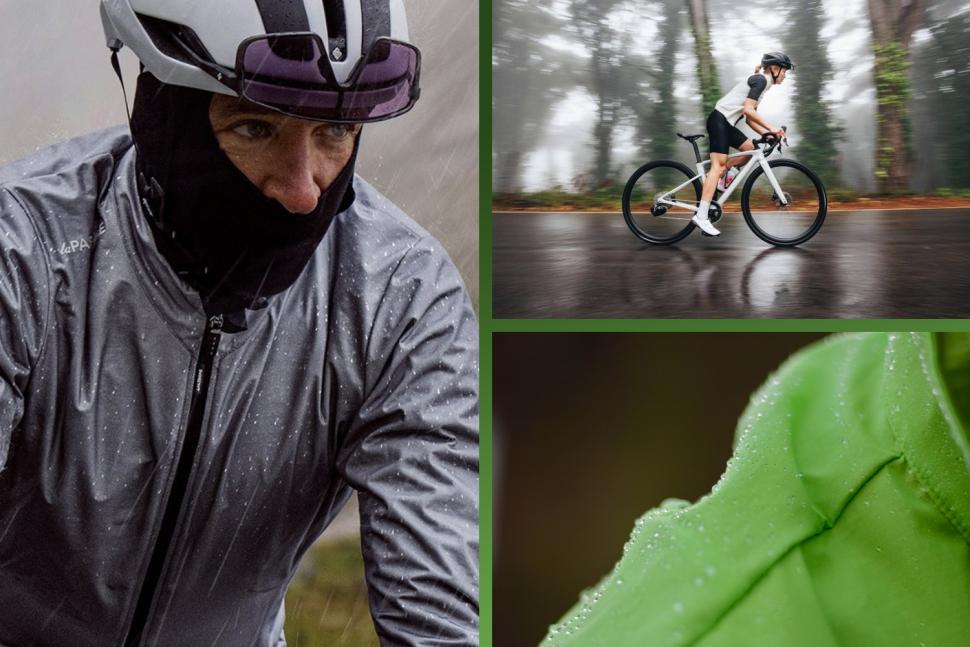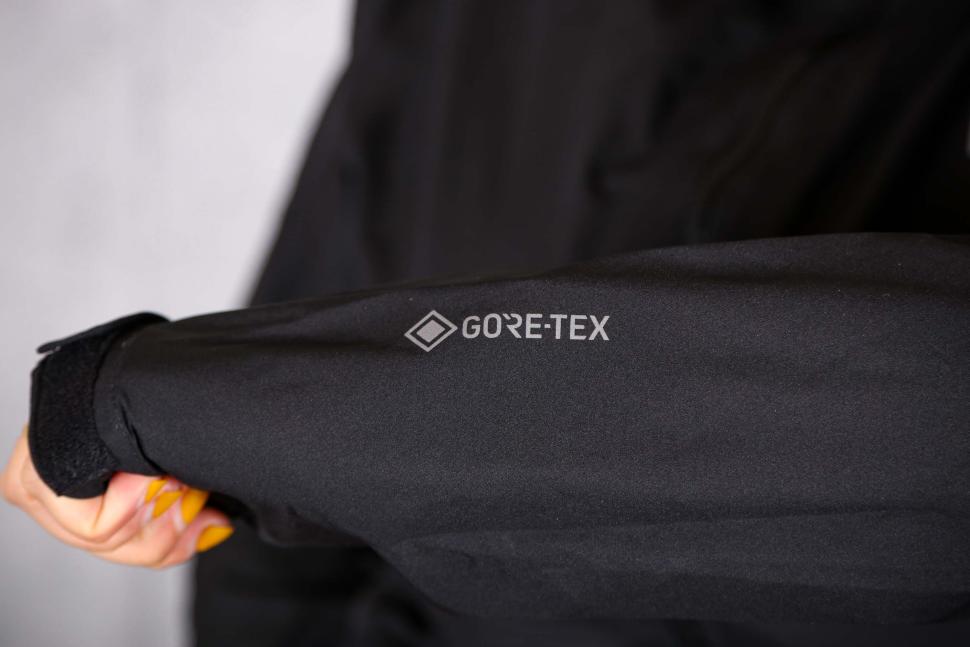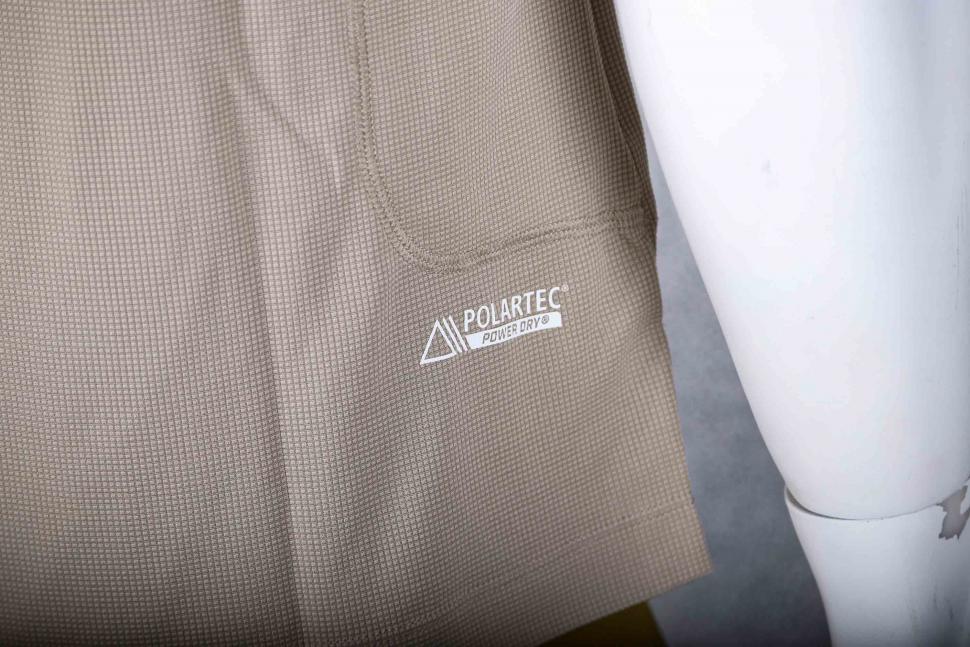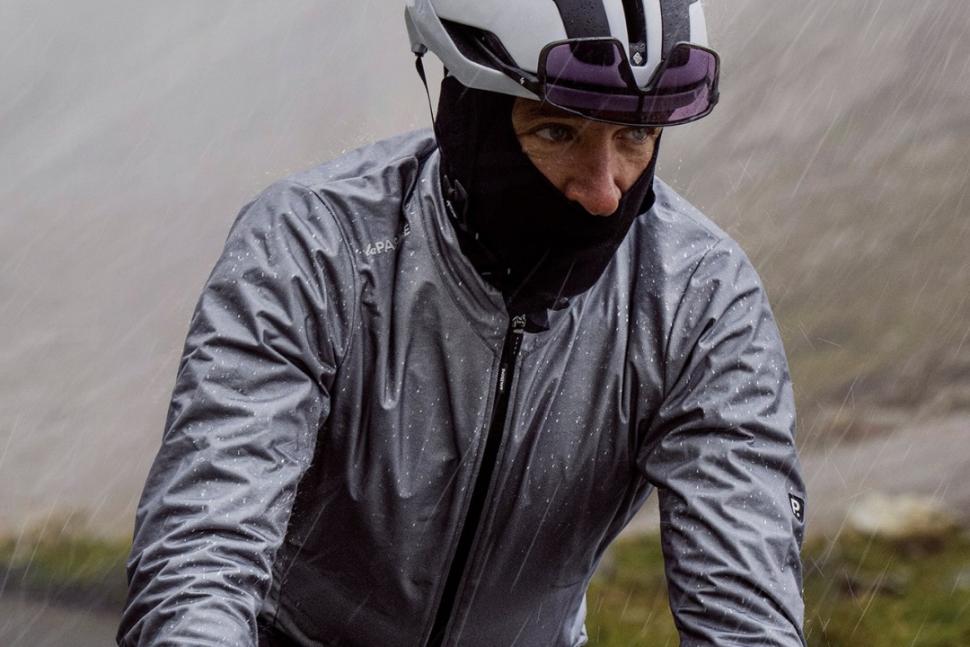- News
- Reviews
- Bikes
- Components
- Bar tape & grips
- Bottom brackets
- Brake & gear cables
- Brake & STI levers
- Brake pads & spares
- Brakes
- Cassettes & freewheels
- Chains
- Chainsets & chainrings
- Derailleurs - front
- Derailleurs - rear
- Forks
- Gear levers & shifters
- Groupsets
- Handlebars & extensions
- Headsets
- Hubs
- Inner tubes
- Pedals
- Quick releases & skewers
- Saddles
- Seatposts
- Stems
- Wheels
- Tyres
- Tubeless valves
- Accessories
- Accessories - misc
- Computer mounts
- Bags
- Bar ends
- Bike bags & cases
- Bottle cages
- Bottles
- Cameras
- Car racks
- Child seats
- Computers
- Glasses
- GPS units
- Helmets
- Lights - front
- Lights - rear
- Lights - sets
- Locks
- Mirrors
- Mudguards
- Racks
- Pumps & CO2 inflators
- Puncture kits
- Reflectives
- Smart watches
- Stands and racks
- Trailers
- Clothing
- Health, fitness and nutrition
- Tools and workshop
- Miscellaneous
- Buyers Guides
- Features
- Forum
- Recommends
- Podcast
feature
 How green is your waterproof cycling jacket? Oct 2023
How green is your waterproof cycling jacket? Oct 2023How green is your waterproof cycling jacket? Why some tech is being phased out in favour of more eco-friendly materials
With the UK experiencing rain on over 150 days annually, waterproof cycling jackets have become essential in many cyclists' wardrobes here and in most other parts of the world. These jackets incorporate a range of modern fabrics and technologies to ensure they are waterproof, windproof and breathable. However, this has previously involved the utilisation of PFCs (perfluorochemicals). As we become increasingly aware of our environmental impact, is there replacement technology for waterproof jackets, and is it as effective?
PFCs are recognised for their ability to improve the properties of waterproof and breathable membranes by enhancing their resistance to water and grease. Many outdoor clothing brands have openly acknowledged the inclusion of PFCs in their waterproof product lines.
Nevertheless, PFCs are notorious for their slow degradation and associations with a number of health effects. So, what is being done to reduce this impact?
What exactly are PFCs?
Whilst PFCs, or perfluorochemicals, is a term with no exact definition, it generally refers to a broad group of highly fluorinated compounds with vastly differing physical attributes and properties.
PFCs are a group of synthetic chemicals that are widely used in various industrial and consumer products thanks to their water and grease-resistant properties. These compounds are commonly found in waterproof membranes like Gore-Tex, and DWR (durable water-repellent) coatings used in outdoor clothing. This water-resistant characteristic has, in the past, been a common feature in the construction of waterproof cycling jackets.
PFCs include numerous synthetic chemicals. Some common PFCs include the catchily-named PFOA (perfluorooctanoic acid) and PFOS (perfluorooctanesulfonic acid).
A significant aspect of PFCs is that they are made to last, which has raised concerns about their resistance to degradation, potential health risks, and contribution to pollution.
What are the concerns associated with PFCs?
The biggest risk factor is that PFCs are extremely stable, meaning they don't readily break down in the environment. This means they can accumulate in water, soil and even living organisms over time.
As well as posing a risk to the environment, PFCs have been associated with risks in humans too. This is because, as mentioned above, these chemicals have the potential to bioaccumulate in living organisms. PFCs have been found in some drinking water sources, leading to concerns about their potential impact on human health when ingested.
Some PFCs, like PFOA and PFOS, have also been linked to having potential connections to certain cancers and developmental issues.
It's important to note that not all PFCs raise the same level of concern, but in response to these environmental and health concerns, measures have been taken to phase out or regulate the use of specific PFCs. In particular, long-chain PFCs such as PFOA and PFOS.
For example, PFOA is prohibited in the EU, and PFOS is only authorised for a limited number of applications within the EU.
What's being done in the cycling industry?
At the end of 2022, Gore surprisingly announced it was stopping the production of its popular Gore-Tex Shakedry fabric. This is used in many winter cycling jackets across numerous brands for its waterproofness, breathability and lightweight.
While this was originally thought to be due to supply chain issues, it appears that's not the sole reason. Gore-Tex membranes and DWR treatments contain PFOA chemicals, which are known to be harmful PFCs. Despite Gore missing its end of 2023 deadline to phase these products out, Gore has now made a commitment to make all of its products PFC-free by 2025.
Many outdoor clothing brands use Gore-Tex membranes for their waterproof clothing, and lots of people consider it to offer the ultimate protection in tough weather conditions. Can any more eco-friendly alternatives match the performance, or will the soon-to-be-discontinued Shakedry become the Concorde of cycling clothing?
While there may still be Shakedry material in circulation used by other brands depending on their stock, Gore is no longer making it. Instead, it is focusing on the development of new DWR treatments and membrane materials.
Replacement technology
"As a technology company that develops and manufactures innovative fabric solutions, we take seriously our responsibility to ensure the chemicals used in our products do not harm any person or the planet," Gore says.
As a result, new Gore-Tex products feature an ePE (expanded polyethylene) membrane instead.
Materials such as ePE, in the form of microporous polyethylene (PE) textiles, have been available to the outdoor industry for some time. However, companies like Gore have been hesitant to adopt them in the past, claiming it lacks the required durability for high-performance waterproof clothing.
That being said, Gore says that its new membrane is "light and thin, yet strong, and it's PFC free with a reduced carbon footprint", which has been achieved by using non-fluorinated materials.
We are unable to provide a comparison of the new Gore-Tex material incorporating ePE to Gore-Tex Shakedry right now. Nonetheless, Gore-Tex's self-reported ratings indicate "excellent" performance in waterproofing, breathability, and windproofing.
Brands that plan to make use of the new ePE fabric include Adidas, Patagonia and Salomon according to numerous reports.
Gore-Tex isn't the only one to produce waterproof, windproof and breathable cycling clothing that's also more convincing in terms of sustainability. Polartec is a provider of innovative and sustainable textile solutions, and it has recently joined forces with cycling apparel brand Santini, the current manufacturer of the official Tour de France jersey.
Polartec's Power Shield is a membrane made from a combination of plant-based and non-PFAS materials and "achieves an industry-leading combination of waterproofness, windproofness, long-lasting breathability, high durability, and comfortable stretch", Polartec claims.
The Power Shield material is featured in Santini's Adapt Multi Jacket and Adapt Shell Jersey.
> How environmentally sustainable is your cycle clothing?
Is replacement technology as effective?
It's evident that some clothing brands have switched to alternative chemistries, but many have claimed it's challenging to meet repellency requirements, like resisting stains and repelling oil, without using fluorochemicals.
However, research conducted at the University of Leeds in 2017 proposes that the use of controversial fluorochemicals in the manufacturing of most of these garments may be unnecessary.
They compared the performance of fabrics with newer, alternative finishes alongside ones treated with fluorocarbons. Dr Richard Blackburn, head of the Sustainable Materials Research Group at Leeds, said:
“We concluded that the use of fluorochemicals in outdoor apparel represents over-engineering, providing oil repellency that is in excess of user requirements.
"Significant environmental and toxicological benefits could be achieved by switching outdoor apparel to non-fluorinated finishes without a significant reduction in garment water-repellency performance.”
This is an interesting finding showing that it's potentially the oil and stain repellency that's hard to achieve without the chemicals, rather than the waterproofing, and so there may be little reason why the waterproofing capabilities of a jacket without fluorochemicals would be significantly compromised, if at all.
The most important factor for many people when considering a waterproof jacket is water repellency, and the researchers found that the majority of people were indifferent to levels of stain resistance and oil repellency.
Blackburn also adds, "It’s very important that sustainability should be about better chemistry. Consumers don’t need to compromise on performance for the sake of the environment".
Summary
The chemistry employed to make fabric waterproof has gained much attention from European regulatory agencies, academic researchers, and environmental advocates. In addition to environmental concerns, PFCs have also been linked to human health issues, and we've seen manufacturers like Gore and Santini beginning to use more sustainable materials - that don't contain PFCs - in their waterproof ranges.
The research from the University of Leeds provides a good starting point that alternative finishes may still be able to meet the repellency requirements of waterproof jackets. All that will be sacrificed is some excess oil repellency, which is probably not a crucial requirement for most of us save for some very unusual circumstances on your next ride...
You can read the full study from the University of Leeds - 'Substitution of PFAS chemistry in outdoor apparel and the impact on repellency performance' - by downloading the PDF here. Thanks to the University of Leeds for sharing the research in full.
Emily is our track and road racing specialist, having represented Great Britain at the World and European Track Championships. With a National Title up her sleeve, Emily has just completed her Master’s in Sports Psychology at Loughborough University where she raced for Elite Development Team, Loughborough Lightning.
Emily is our go-to for all things training and when not riding or racing bikes, you can find her online shopping or booking flights…the rest of the office is now considering painting their nails to see if that’s the secret to going fast…
Latest Comments
- eburtthebike 6 hours 34 min ago
The deterrent effect is almost certainly due to the massively increased likelihood of the offence being detected. As with other crimes, if the...
- Martin1857 7 hours 1 min ago
As a member of the Co-op community (I live in a Housing Co-op) and a bike owner /rider, this is very sad news. We need more Co-ops not less.
- AnotherChrisOnAnotherTrike 7 hours 2 min ago
My EV exceeds the size. It's the smallest vehicle available which can transport my wife's trike (excursions or rescue).
- Dnnnnnn 6 hours 52 min ago
It is sad for the individuals concerned but (and this is a general point, rather than specific to this story), we're much better off overall for...
- No Reply 7 hours 43 min ago
I agree with Pogacar regarding social media. The likes of Facebook, Instagram have done untold damage, especially to the minds of young people....
- David9694 7 hours 48 min ago
Lorry carrying 25 tonnes of beer catches fire on the M11...
- No Reply 7 hours 52 min ago
If you're a cyclist on a road you are public enemy number 1.
- Rendel Harris 8 hours 22 min ago
He advocates only riding mountainbikes solely offroad for ultimate safety, which is great if you're a millionaire of leisure living in Colorado...
- ktache 8 hours 53 min ago
That looks like a fun bike. Frame only, 2 and an 1/2 grand.
- wtjs 9 hours 49 min ago
Fair enough, personal experience may trump (not that one) theory. However, the bonking I have experienced has been due to lack of carbs. Your point...










Add new comment
9 comments
step one: ban PFC from our clothing, step two: how about PFCs/ Teflon in our chaincare?
If anyone knows how to re-waterproof my Proviz, passing your knowledge on would be appreciated 🙂
Haven't had to re-waterproof my Proviz yet but for years I've found Nikwax spray-on perfect for reproofing all my outdoor gear, including cycling jackets and trousers.
I did think about Nikwax, but wasn't sure about it as the Proviz isn't really a cloth based material as such.
Might get a small can and try somewhere unimportant, like the back pocket to see of there's any damage done.
That's a point, but I've used it on polycotton materials (60% polyester) and it's done a good job so I can't think of any logical reason it couldn't work on 100% polyester?
This article needs an 'environmental' tag. It would be good to see every consumer product (all goods and services) have a full ecological footprint statement. Consumers would then be able to make informed decisions.
An indicator of environmental impact should be included in every review.
I like how The Guardian does it for tech reviews. If there is no way to fix the producbyou can't reach five stars.
I strongly agree with that but implementing that into cycling maybe puts attention elsewhere. I ride an strongly built aluminium bike for more than a decade and don't plan to replace it as long as I find parts for it. It's total weight is approximately a family's weekly garbage so it has a really tiny garbageprint if there is such a term.
On the other hand I see a pile of plastic packaging everywhere at crazy amounts. I would be very happy to pay tax for EVERY possible material sold (either as packaging or the product itself) with corresponding factors for each material (excluding food, plastic would probably have the greatest factor) and money earned spent on green tech.
The larger fabric mills have already reacted quicker than the brands by phasing out the offering of PFOA, including DWR applied mill. Lots of DWR dips and sprays applied - after stitching is currently still toxic in the stitching factories.
Looking forward to seeing energy usage and water consumption rating applied to garments. Some Recycled fabrics usage is 400 litres for one yard of material.